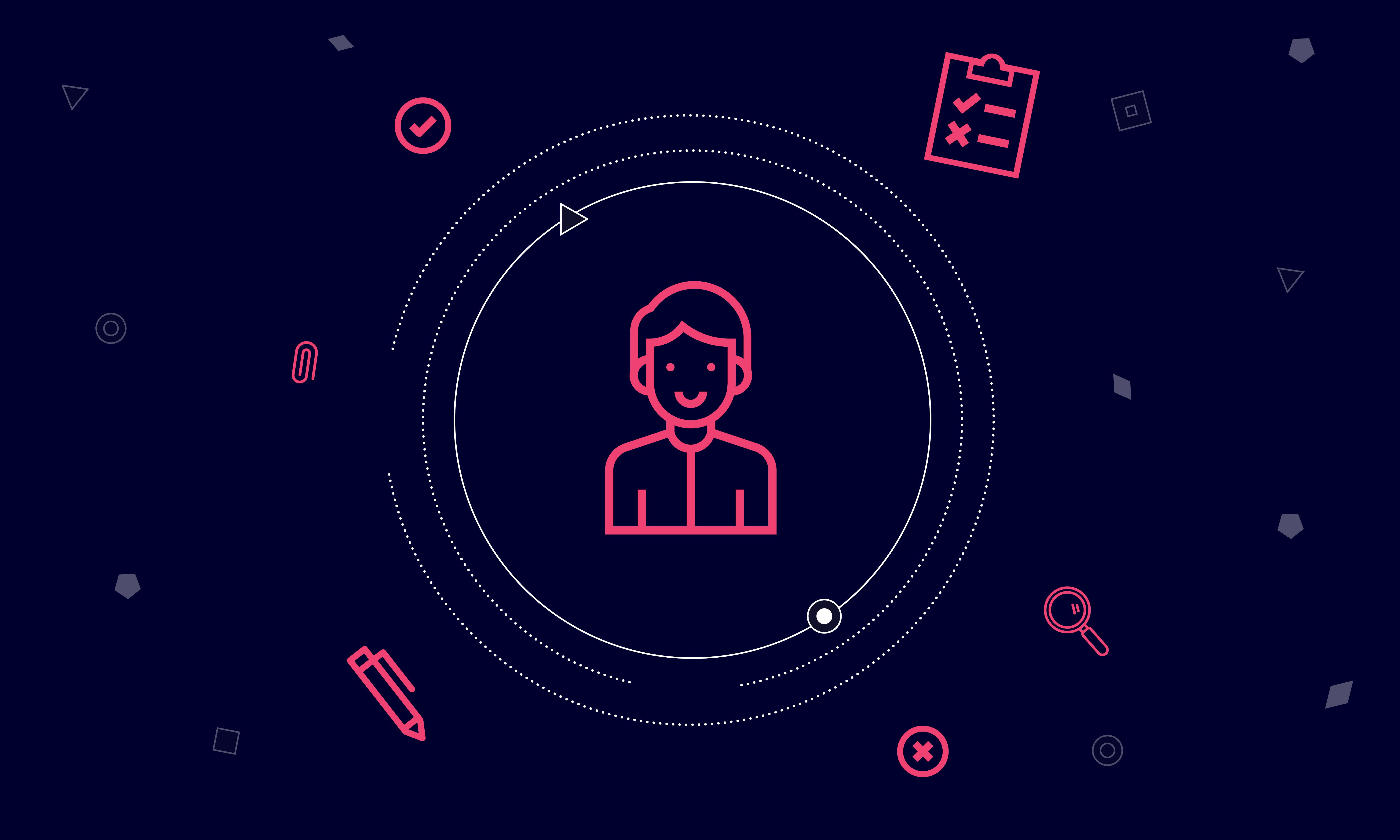The Ultimate Customer-Centricity Model
by Relay42 on 28.3.2019

What is customer-centricity?
“We need to be more customer-centric.”
You’re not the first one to go on a Google hunt for information and advice on customer-centricity. In fact, search queries for “customer-centric” have been pretty steady at least since the time Google started tracking search queries, and seem to be on the rise again.

But what exactly is customer-centricity, and why is it important right now?
Customer-centricity defined
We at Relay42 define customer-centricity thusly:
Customer-centricity is about making your customer and their journey the starting point in everything that you do. It means not leading with your products, marketing, sales channels, or campaigns, but instead leading with your customers' needs and wishes.
The customer experience is at the core of customer-centricity, and relates to questions businesses should be asking themselves like:
- How do our customers relate to our brand?
- What does our buyer journey look like?
- Is our customer journey consistent and helpful?
- And if so, does that consistent and helpful journey continue post-purchase?
Granted, the effectiveness of the customer experience isn’t always easy to measure. But you can look inward toward your organization to ensure you’re doing everything possible to set up your teams — and therefore your customers — for success, and that’s where our customer-centricity model comes in.
The 5-Pillar Customer-Centricity Model

The core principle of the customer-centricity model states that an organizational operation with a (strong) technology component requires a strong foundation in (1) leadership and (2) strategy and balanced use of (3) people, (4) processes and (5) platforms.
In other words, a customer-centric company should consist of high-quality people, processes, and platforms, steered by a clearly defined strategy and governed by committed leadership.
If all of these parts are working together properly, your organization is likely operating in a customer-centric way. In this article, we're unpacking each of these 5 pillars and offering tips, questions and advice to help you both evaluate your level of customer-centricity and take it to the next level.
Jump ahead to dive straight into a specific customer-centricity pillar:
Leadership
Strategy
People
Processes
Platforms
Leadership
Our customer-centricity model is built on a foundation of leadership because without strong leadership to inspire, encourage, and pave the path, the rest will topple over.
The onus is on senior management to make customer-centricity a priority. If they’re driving a strategy that’s all about the bottom line, it's not likely that the individual parts of the organization will manage to become customer-centric.
- Is your leadership team initiating projects and tasks that take your customer as the starting point?
- Are your leaders empowering team members to solve customers’ problems?
In a customer-centric organization, senior leaders lead by example. They perform their own research on customers and their behavior, and they use it to drive the overall business strategy. More than that, they allow for an agile approach so that everyone in the organization can properly manage shifts in customer expectations.
Strategy
How customer-centric is your organization’s current business strategy? Are you taking an inside-out approach or outside-in? Here are some key indicators that your organization is on the right path:
- Customer-centricity is clearly defined for your organization. Customer-centricity isn’t some vague trendy word for you and your colleagues — it refers to a larger, overarching theme that comes back regularly in business updates, strategy meetings, and operational planning. What does being customer-centric mean for your organization?
- Your company culture is centered around customer needs rather than business needs, bottom line, and ROI.
- You are running a company-wide program on customer centricity. Call it customer obsession, call it digital transformation — a program like this will take different forms depending on your organization and your product or service. But you’ll know it if you have one.
- You have shared interdepartmental KPIs focused on customer satisfaction. Because customer success is an organization-wide operation, not just a KPI that lives and dies with customer service or your customer success team (do you have one?). Every department has something valuable to contribute to the customer experience, and if you’re not talking with each other and sharing goals and targets, then chances are your customers are getting lost somewhere along the way.
- Success in your organization is evaluated on long-term results like retention and customer lifetime value, rather than short-term sales. To get started, ask yourself, your colleagues and your senior leadership some questions:
- How does our organization measure results?
- What does success look like?
- Is our customer’s success our success?
People
If your leadership team and strategy are customer-centric, you’ve got a solid foundation. But it won’t bring results if the people who make up your organization aren’t empowered with the right tools and knowledge to execute the strategy.
Tip 1: Training
Ensure that everyone in your organization has the necessary skills to understand your customers and personalize content and messaging to suit your customers’ needs. This will, of course, look different for IT vs sales vs marketing, but the spirit is the same. Everyone’s work contributes to the customer journey, and it’s vital that employees understand how their contribution makes an impact.
The most important thing to remember here is that when comparing customer-facing and non-customer facing roles, understanding the customer is key.
Whether an employee converses directly with customers or is tucked away creating technology, understanding the people they're doing it all for allows them to prioritize correctly and prevents them from making decisions that could make their lives easier but the customer's harder.
Tip 2: Resources
One way to empower employees in their customer-centric training could be to establish a Center of Excellence. Allocate resources in the necessary teams so they can execute customer-centric campaigns. This could take the form of unified customer profiles, persona research, customer feedback from NPS surveys, customer interviews, and more. Do whatever it takes to make sure the voice of your customer is heard loud and clear by everyone in your organization.
Tip 3: Share the wealth
Knowledge-sharing sessions are a great way to ensure there is sufficient interdepartmental collaboration around customer-centricity. What does IT know about your customers that marketing doesn’t, and vice versa? Encourage everyone to work together, especially with colleagues in customer-facing departments and teams.
Tip 4: Accountability
And then make sure people are being evaluated on their efforts to put the customer first. Establishing truly customer-centric KPIs is one of the best ways to keep customer-centricity top of mind.
Create a central dashboard for these special KPIs and hold everyone accountable for them. Help employees understand how their work influences each KPI. Celebrate your wins and analyze your losses, being sure to always approach "failure" as a learning opportunity.
10 customer-centric KPIs:
- Number of complaints per day
- Average resolution time
- Customer churn
- Escalation rate
- Task completion rate
- Customer effort score
- Average time to journey completion
- Customer lifetime value
- Customer lifetime length/duration
- Net promoter score (NPS)
Processes
One person wants the freedom to fly by the seat of their pants — it’s all about agility, flexibility, and room for creativity. The other needs their processes like they need water to drink and air to breathe — it’s about organization, structure, and control.
We’re not here to tell you what your process should look like — only that they must encourage interdepartmental collaboration and they must be regularly evaluated and optimized to limit any potential negative impact on your customers.
- Do your processes eliminate roadblocks standing in the way of sharing customer data and insights across teams?
- Are your projects and product roadmap shaped by new customer insights?
If you answered yes to both questions, then you are on the right path. While processes are there to create structure and provide clarity and direction, it’s essential to use them as a tool for change and growth, rather than let them bog your organization down with formalities and empty tasks.
Build your processes around your customer’s needs
Our main piece of advice here is to ensure your organization’s customer-facing teams and departments are working together on a structural basis to manage the end-to-end journey.
We’ve seen too many instances of siloed teams and departments — each one managing a small piece of the customer journey, and none with a complete overview. Without the complete picture of your customer’s journey, how can you know if their experience is a good one, and how can you put processes in place to improve it?
Platforms
Finally, we’re rounding off our ideal customer-centric organization with technology. Tech connects you with your customers. It helps you complete transactions. It measures your KPIs. In many cases, it makes up the stuff of your customer’s entire journey.

Today’s customer-centric organization should absolutely be working with an interconnected technology stack. Technology silos are holding back too many organizations. Your customer-centric business should be working with tech that allows you to recognize individual customer across all systems and touchpoints, and to measure their interactions.
Customer-centric technology will allow you to collect and use customer data, to truly understand them and their journeys, and learn how to improve their experience. It will also give you direct access to your customers through touchpoint connectivity, so you can activate your customer data across channels and allow for actual orchestration of the journey.
4 questions to find out if your technology stack is customer-centric
- Do you have clear insights regarding your customers and their full journeys?
- Does that extend to both digital and traditional channels?
- Does your technology allow you to link customer information and interactions to one single customer profile?
- Does your technology enable you to adjust customer journeys in real time for the best possible customer experience — no matter the channel or moment?
- Depending on your organization’s current level of customer-centricity, the technology you use can either act as an enabler, an accelerator or become a powerful part of the very core of your business strategy and operations.
You May Also Like
These Related Stories

The First Powerful Customer-Centricity Quiz Insights

The Role of Technology in Customer-Centricity


